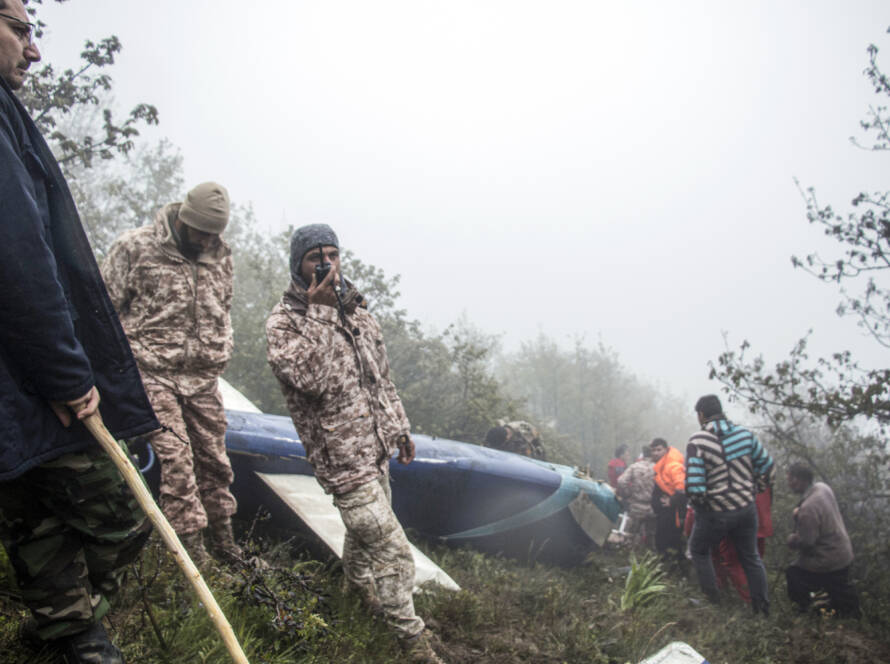By Vinod Moonesinghe
The festival of Vesak celebrates the birth, enlightenment (nibbana), and demise (Parinibbana) of Siddhartha Gautama, the Buddha, also known as Sakyamuni Buddha. It may be compared to a combined festival of Christmas, the Theophany, and Easter for Christians, or the Prophet’s birthday, Hajj, and Ramazan for Muslims. Also known as Buddha Day, Buddha Jayanti, Buddha Purnima, Phật Đản, Saka Dawa, Vaishakh Purnima, Vesākha, Visakat Tirunal, and Vixakha Bouxa, hundreds of millions of Buddhists observe it worldwide.
Debate surrounds the actual dates of Siddhartha Gautama’s life, with the Mahavamsa tradition placing it at around 624-544 BCE, while Mahayana traditions have a broader range of dates. An early Buddhist document from Guangzhou, The Dotted Record of Many Sages, puts the Buddha’s parinibbana at 486 BCE. Scholar Wilhelm Geiger examined the Mahavamsa chronology in light of Hellenistic dating of Emperor Ashoka’s consecration and estimated the year to be 483 BCE.
However, in 1988, a conclave of Orientalists in Göttingen concluded that Siddhartha lived during the fourth century BCE due to “the ancient Indians’ lack of concern about chronology.” Notably, there were no participants from India or Sri Lanka, nor any Asian countries except Japan, Nepal, and Israel. Despite this, Theravada countries continue to use the Mahavamsa chronology, and the celebration of Buddha Jayanthi, or 2,500 years after the Buddha’s parinibbana, took place in 1956-57.
The Buddha and Asoka
Born in the ancient Sakya republic, the scion of the rich Gautama (or Gotama) family, Siddhartha grew up wanting for nothing, proving himself skilled and learned. However, growing discontent, he set forth to discover the true meaning of existence. He travelled to Magadha, then the centre of sub-continental philosophical discourse.
The lower Gangetic valley lay in the midst of revolution: prosperity brought about a transformation in society, as non-Brahmanical classes began to increase in importance and challenged the supremacy of the Brahmins. Up to 60 sages of different, heterodox creeds contested the religious and social orthodoxy.
Siddhartha immersed himself in philosophy under two such philosophers, Alara Kalama and Uddaka Ramaputta. Finding their teachings inadequate, he sought to uncover truth through logic and meditation, even enduring near-starvation. Realising the need to take a “middle path”, between self-indulgence and self-denial, he achieved enlightenment and formulated the Four Noble Truths: the existence of suffering, the cause of suffering as desire, the need to eliminate desire, and the path to its elimination. These truths form the core of Buddhism, with the vast body of texts serving as a means to this end.
After years of teaching, the Buddha passed away, leaving a group of learned monks to continue spreading the Dharma. As Buddhism spread, it developed at both a philosophical and popular level, with the latter involving rituals and symbols such as the Bo tree and dagoba.
Although images of the Buddha did not emerge for centuries, they eventually surfaced in the Hellenistic kingdoms in the 2nd century CE – the recent discovery of a Buddha figurine in the ancient Egyptian town of Berenike testifies to its wide spread. The irony of Vesak is that it celebrates a teacher who did not seek adulation. The Buddha advised his disciple Ananda to focus on striving for enlightenment rather than worrying about funeral rites. One can best pay tribute to the Buddha by following his path to enlightenment.
Two centuries after the parinibbana, Emperor Ashoka embraced his teachings and initiated a revolution, ruling with the principle of justice for all living beings, laying the foundation for humanitarian law and animal rights. Ashoka also promoted tolerance by granting freedom to all belief systems, in accordance with the Buddha’s teachings. To this day, he epitomises the ideal of the Buddhist ruler, his regime the ideal Buddhist State.
Buddhism in international relations
Asoka may have been the first ruler to utilise public “soft power” in diplomacy, using State-sponsored Buddhist missionary activities to spread the influence of the Mauryan empire. The classic example of this is Sri Lanka, with which he established close relations based on respect and recognition of interdependence, but he also had friendly dealings with all the neighbouring kingdoms, including the Hellenistic states to his West.
This facet of Buddhism demonstrates the manner in which it differs from liberalism, rejecting the assumptions of independent, permanent, and self-interested actors. It sees people primarily as altruistic and peaceful, only selfish due to ignorance of reality. Conflict arises from this misunderstanding.
Buddhism also rejects the Western notion of the independent nature of states and emphasises the interdependence and impermanence of all things. This understanding could lead to a more collaborative approach to international relations. Denying the reality of interdependence is counterproductive, as demonstrated by the Cold War era. Unlike liberalism, Buddhism argues for total interdependence in all facets of life.
Diplomat, bureaucrat, politician, writer, and public intellectual Shashi Tharoor in his 2008 article “India as a soft power”, in the Asia Quarterly, stated that “… increasingly, countries are judged by the soft-power elements they project… through the export of cultural products, the cultivation of foreign publics or even international propaganda.”
The emerging giants of the multipolar world order, China and India, both emphasise Buddhism strongly in order to increase their soft-power attractiveness. While Buddhism has drawn the two countries together in their bilateral relationship, China and India both compete for influence, among Buddhist countries and international organisations.
Yet India saw Buddhism swept away under the onslaught of Hindu Bhakti cults and Islam. Today, the Indian State recognises Buddhism in the context of Hindu reinterpretation, ignoring the demands of its mainly Dalit following. In post-revolutionary China, Buddhism had a roller-coaster ride, although it appears to be transitioning from a short-term, straightforwardly tactical use of Buddhism to long-term regularisation within international socialisation scenarios.
Japan which, unlike India and China, has embraced Buddhism as an integral part of its cultural and religious landscape since its introduction in the sixth century, may have achieved a more authentic projection of Buddhist soft power, being probably the first country in modern times to employ Buddhism for diplomatic purposes and promote Buddhist tourism, and Japanese-sponsored Viharas and shrines dot the globe.
In the 1880s, Colonel Henry Steele Olcott and Anagarika Dharmapala visited Japan, bringing back with them Japanese Vesak lanterns, now an inseparable part of Sri Lankan Vesak celebrations.
Vesak
During the 1883 Easter celebrations, Roman Catholics attacked a Buddhists procession in Colombo’s Kotahena suburb. In response, members of the Buddhist Theosophical Society formed the Buddhist Defence Committee to demand that Vesak be declared a holiday and that the government follow a policy of religious neutrality and non-discrimination – one had hitherto to be Christian to join the native headman service.
The British government agreed to these demands, and on 27 March 1885, Governor Sir Arthur Hamilton Gordon removed non-Christians’ disabilities and declared Vesak Poya a public holiday. To this the secular character of the Sri Lankan State owes its existence. This event underscores the significance of Vesak not only as a religious holiday but also as a symbol of religious tolerance and harmony.
Buddhism emphasises the importance of compassion, empathy, and non-harm towards all living beings. This message of peace and non-violence is particularly relevant in today’s world, with its rising conflicts and tensions between nations. Vesak provides an opportunity for people to reflect on these values and work towards promoting peace and harmony in their own lives and in the world at large.
Vesak impacts international affairs significantly by stressing environmental sustainability, particularly important in today’s world, where climate change and pollution are becoming increasingly urgent. Vesak also effects relations between Buddhist and non-Buddhist countries.
Many countries around the world have large Buddhist populations, and the celebration of Vesak can serve as a bridge between cultures and religions. In countries where Buddhism dominates, Vesak can help to foster a sense of national unity and pride. In countries with smaller Buddhist populations, Vesak can serve as an opportunity for cultural exchanges, making it an important festival for people of all cultures and religions.
Thailand, a major Theravada Buddhist power, hosts an annual Vesak Conference. It is part of Thai soft power projection – Thai wats provide religious nodes to Theravada Buddhists the world over. Even the Deepadhuttaramaya Vihara in Kotahena, the site of the first hoisting of the international Buddhist flag on Vesak Day, 1885, receives generous donations from the Thai Royal family.
In 1950, the first conference of the World Fellowship of Buddhists, held in Sri Lanka, validated Vesak as an international Buddhist festival. In 2000, the United Nations General Assembly gave international recognition to Vesak day.
In 2020, with the ravages of COVID-19 putting the world under enormous strain, the UN postponed the observance of Vesak to July. On that occasion, UN General Assembly President Tijjani Muhammad Bande said: “May this commemoration serves as occasion to remind ourselves of the importance of tolerance, mutual respect and understanding – that are enshrined in the Buddhist teachings.” This highlights how, as the world becomes increasingly interconnected, the celebration of Vesak will continue to play an important role in promoting understanding and harmony between nations.
Vinod Moonesinghe read mechanical engineering at the University of Westminster, and worked in Sri Lanka in the tea machinery and motor spares industries, as well as the railways. He later turned to journalism and writing history. He served as chair of the Board of Governors of the Ceylon German Technical Training Institute.
Factum is an Asia Pacific-focused think tank on International Relations, Tech Cooperation and Strategic Communications accessible via www.factum.lk.
The views expressed here are the author’s own and do not necessarily reflect the organization’s.



1 Comment
Damitha
Very informative article